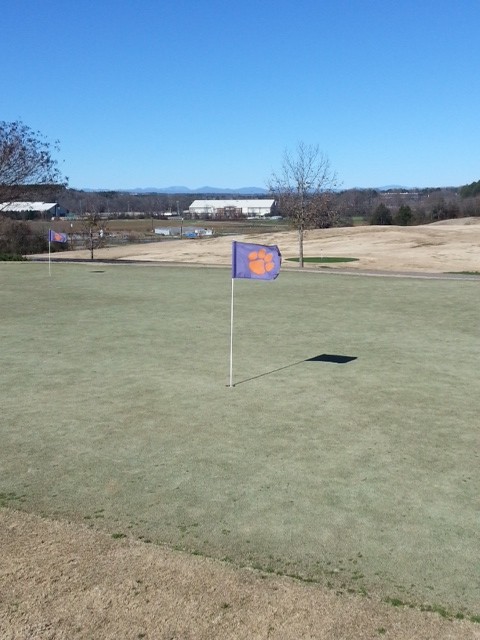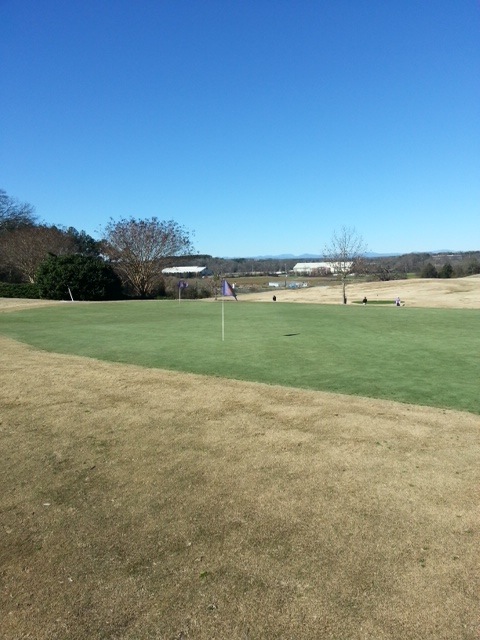GEOPONICS SITS DOWN WITH GREENSKEEPER ABOUT HIS RESULTS AFTER SWITCHING FROM OTHER WETTING AGENT TO THE SOIL SURFACTANT PENTERRA
Pat Nagle, General Manager Charleville Golf Club, Ireland
(www.charlevillegolf.com)

Q. Can you tell me a bit about Charleville Golf Club?
A. It’s a 27-hole parkland course located in Southern Ireland’s province of Munster. We have a driving range, two chipping greens and two putting greens.
Q. What type of turf and soil?
A. The soil is very heavy. It’s clay. We have 30 greens and 15 are sand based and 15 are soil based.
Q. What Geoponics products are you using?
A. Penterra

Q. How did you hear about Geoponics products and why did you decide to try them?
A. A Geoponics sales representative from the Irish distributor, ProGrass, Brian O’Carroll, called me about six months ago or more. I investigated the products on the website and it looked like the products were quite good. The wetting agent we were using was OK, but the Penterra sounded better and we tried it. First we tried it on a few tee boxes. Then we we tried a few greens. Then we tried them all.
Q. What challenges do you commonly face?
A. Dew. That was our number one reason for using Penterra. We had heavy dew in the morning.

Q. What results did you see with the Penterra?
A. There was no dew. That controlled disease. The mild temperatures of 16 to 17 degrees Celsius, mild and muggy with dew, those were ideal conditions for disease. We found with no dew on the greens, it was a big help in controlling disease like outbreaks of fusarium patch.
The turf looked healthier, we had tremendous color.
The savings more than pays for the Penterra between not having to buy fungicide and the fact we don’t need to come in on the weekends to tend to wet turf when we put it on in advance and at the right rate.
Q. How is the drier surface affecting playability?
A. Players are not complaining. If they’re not complaining, they’ll find something else. (laughs) There’s no discussion on the greens, which is great.
Q. How did Penterra compare to your previous wetting agent?
A. The other wetting agent didn’t control dew. It’s a different ball game with Penterra. There’s no comparison. We are very happy using Penterra. I have only good things to say about it.

Q. How was your service with Geoponics in regards to technical support, especially?
A. The guys are great. They know what they’re talking about. It’s hard convincing greenkeepers to try a new product. We’ll use the same product for 25 years.
Q. Anything I didn’t ask that might help others in the greenskeeping, golf course superintendent or turf management fields?
A. It’s worth trying the product. It’s the best soil surfactant I’ve come across.
Contact us
Geoponics Corp
(www.GeoponicsCorp.com)
1-877-667-6330
info@GeoponicsCorp.com
“Like” our Facebook page for turf tips, photos and sharing our love for the earth, outdoors and turf.
Follow us on Twitter.
Subscribe to our You Tube Channel (www.Geoponics.TV)
Subscribe to our email newsletter here and enter your email address.
View other news and testimonials from others in the turf management field here.
For the Geoponics distributor in Ireland and the U.K., contact ProGrass (www.ProGrass.ie) now carrying even more Geoponics products as seen here.
Click here for ProGrass contact details.










